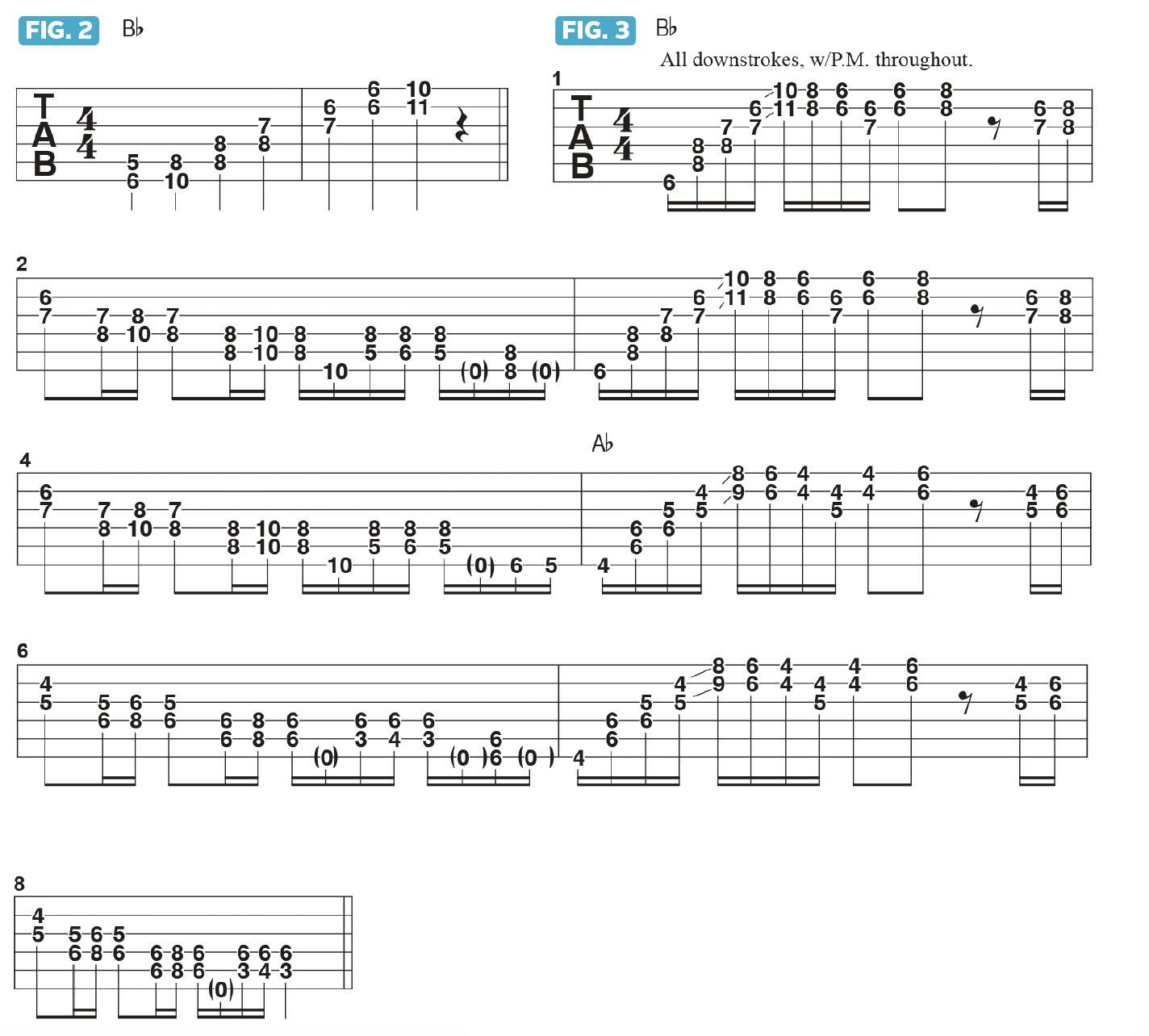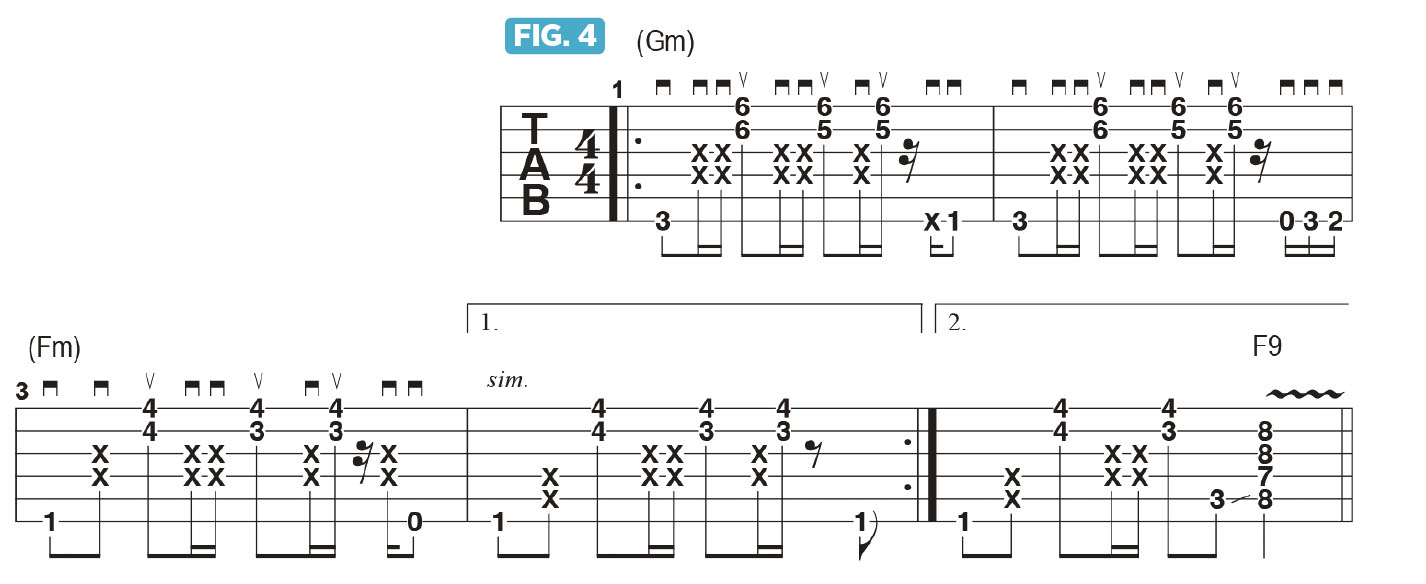
Today I’d like to talk about downpicking – picking or strumming consecutive downstrokes – and why it can be so musically effective.
This is something I learned from studying the riff-writing style of Metallica’s James Hetfield. If you think about the approach to guitar that I’m mostly known for, it seems to have little in common with Hetfield’s.
But I would argue that it has much to do with it, because so much of the energy, feel and sound of one’s rhythm parts has to do with the manner in which we attack our strings.
When it comes to sound and feel, there are huge differences between alternate picking (down-up-down-up), legato phrasing (using hammer-ons and pull-offs) and downpicking.
In Figure 1, I begin playing a two-note G5 chord in an eighth-note rhythm using alternate strumming then switch to consecutive downstrokes in bar 3.

Notice the big difference in sound between the two strumming techniques. The difference becomes even greater if you additionally palm mute the downstrokes… and that’s without even changing your tone or engaging an effect!
A good way for me to exemplify the distinct qualities of downstrokes versus upstrokes is by demonstrating the two main parts of an instrumental tune of mine called Lilypad.
When crafting rhythm guitar parts, I like to work from a “hook,” or compositional, mindset, and my approach here was to create a lead line that was generated by a rhythm part.

The tune’s main theme outlines the chords Bb (Bb, D, F) and Ab (Ab, C, Eb). In devising this rhythm part, I set out to use two-note dyads to describe each of these chords. In Figure 2, I play an ascending series of dyads, using the triadic tones of Bb.
Figure 3 illustrates the “A section” of Lilypad, which is phrased with a combination of 16th- and eighth-note rhythms, all of which I attack with palm-muted downstrokes. The figure is built almost entirely from dyads, most of which are based on a Bb triad.
At the end of bar 4, I move down chromatically, from Bb to A to Ab, then proceed to play the same four-bar idea in bars 5-8 but transposed down a whole step, using Ab chord tones.

The tune’s next section moves down to the relative minor key of Bb major, G minor. As shown in Figure 4, here I play a combination of downstrokes and upstrokes, downpicking bass notes on the low E string, followed by upstroke dyad “stabs” on the top two strings, with pairs of fret-hand-muted “dead-string” accents sandwiched in between on the D and G strings.
In bar 3, I move this idea down a whole step and two frets to imply and Fm sound.
As you can see, the difference in pick attacks makes these two parts sound completely different. As always, I’m thinking like a drummer here. Adopting this mindset can help drive your rhythm parts in unique and effective ways.
- This article first appeared in Guitarist. Subscribe and save.







